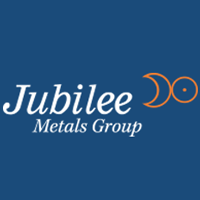While the popular narrative is that Millennials, the soon-to-be largest generation in North America, rely less on automobiles than previous generations, the recent revival of the automobile industry tells a different story.
Global automobile manufacturers are projected to sell more than 81 million cars by the end of 2018; almost double the 53 million total automobiles that were sold between 2000 and 2013.
Specifically, the Asian markets have seen passenger vehicle sales double over the past seven years. In China, sales quadrupled to 24 million vehicles in 2016, representing more than 25 percent of the global market.
Since Millennials and Gen-Ys possess a great awareness for the environment, government-imposed mandates on reducing vehicular pollution have spurred the automobile industry to produce fleets of hybrid cars and increase demand for catalytic converters. Roughly 80 percent of palladium and 40 percent of platinum ends up in catalytic converters, and depending on the vehicle size and manufacturer, each contains between 3 and 7 grams of platinum-group metals (PGMs).
The catalytic converter market is set to grow at a CAGR of 8.05 percent from 2017 to 2021 and is seen reaching a market size of $55.16 billion. As demand for catalytic converters grows, the metals needed to develop them is also on the rise.
Catalytic converters and the role of PGMs
A catalytic converter is a device found in most car engines that turns pollutants in the exhaust, such as carbon monoxide and nitrogen oxides, into benign gases that can be released into the air, like nitrogen, carbon dioxide and water vapor. Catalytic converters trigger a chemical reaction that converts the harmful pollutants with the use of a ceramic tool shaped like a honeycomb and coated with PGMs. It’s placed in the exhaust system between the engine and the muffler, and when the engine heats up the metals the process neutralizes the pollutants.
The PGMs in catalytic converters (platinum, palladium and rhodium) have a broad range of additional applications. Platinum is used in lab and dental equipment, electrical contacts and electrodes and jewelry. Platinum and palladium, like gold and silver, are also considered precious metals and are known to contrarian investors as stores of value.
Palladium plays a key role in fuel-cell technology, while rhodium is an alloying agent for hardening and improving the corrosion resistance of platinum and palladium. These valuable metals are an attractive target for recovery and reuse from used catalytic converters. In fact, by 2021, it is expected that 30 percent of PGMs supply will come from the recycling industry.


